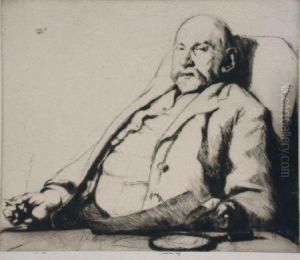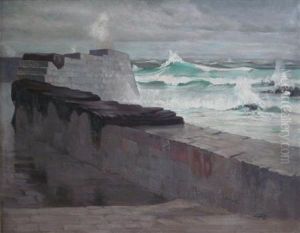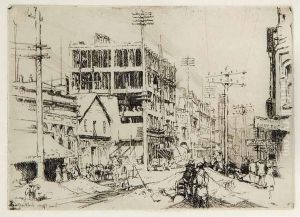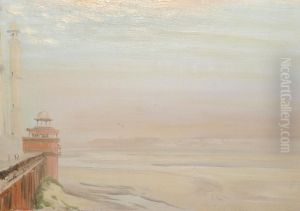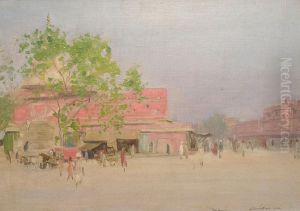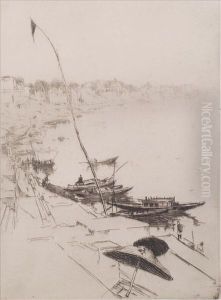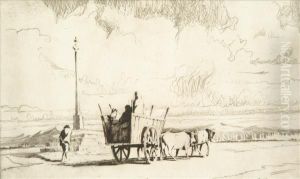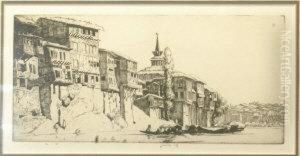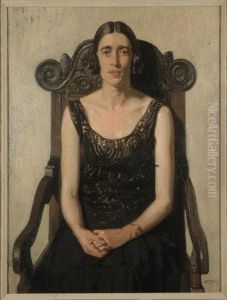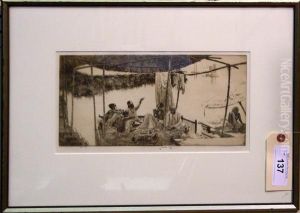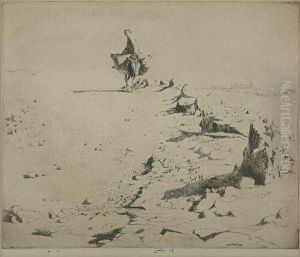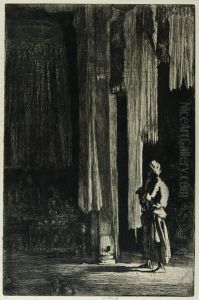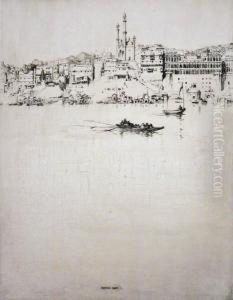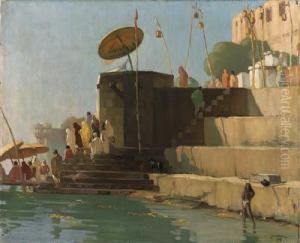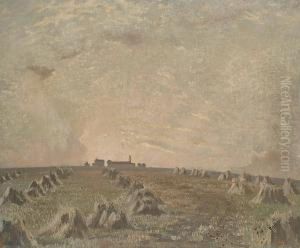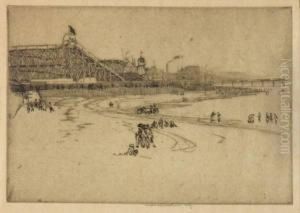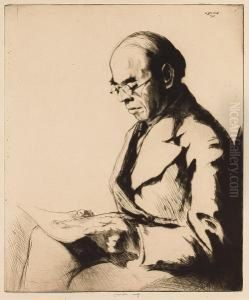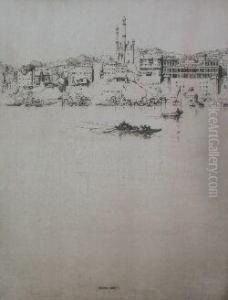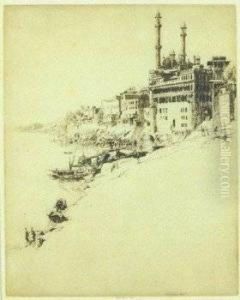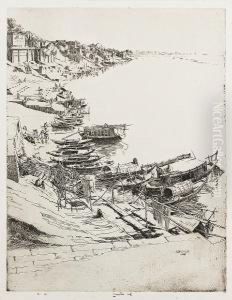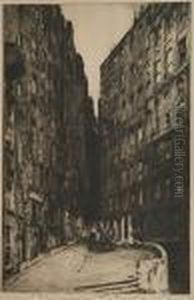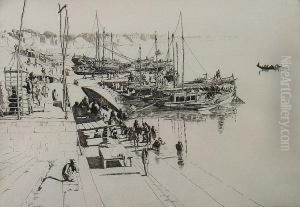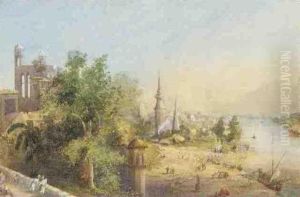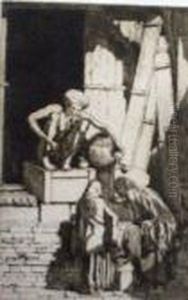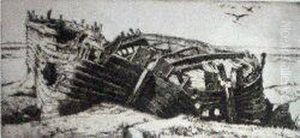Ernest Stephen Lumsden Paintings
Ernest Stephen Lumsden, born on March 22, 1883, in London, England, was a renowned British etcher and painter known for his landscapes and architectural views. He received his early education at Bedford Modern School and later trained at the Edinburgh College of Art under the guidance of Frank Morley Fletcher, a key figure in the promotion of color woodblock printing.
Lumsden's artistic career was marked by his passion for etching, a printmaking technique that involves incising a design onto a metal plate. After his education, he traveled extensively, particularly in India, where he found considerable inspiration for his work. His travels led to the creation of some of his most admired etchings, which often featured exotic landscapes and urban scenes that captured the essence of the locations he visited.
A significant contribution to the art of etching came from Lumsden's book 'The Art of Etching,' published in 1924. The book was both a technical manual and a spirited defense of etching as a fine art. It is still considered an important resource for artists and printmakers interested in the traditional methods of etching.
Lumsden was elected an Associate of the Royal Scottish Academy in 1915 and became a full Academician in 1933. Throughout his career, he exhibited widely, including at the Royal Academy in London, and his work was collected internationally. Lumsden's etchings are characterized by their fine detail, delicate lines, and subtle use of tone. His mastery of the medium earned him a reputation as one of the leading British etchers of the early 20th century.
Despite his success as an etcher, Lumsden also painted in watercolors and oils, although these works are less well-known than his prints. His artistic output reflects a keen observation of his surroundings, often capturing the interplay of light and shadow with a deft touch.
Ernest Stephen Lumsden passed away on September 5, 1948, leaving behind a legacy of work that continues to be admired for its technical skill and artistic beauty. His contributions to the world of printmaking, particularly etching, remain significant to this day.
